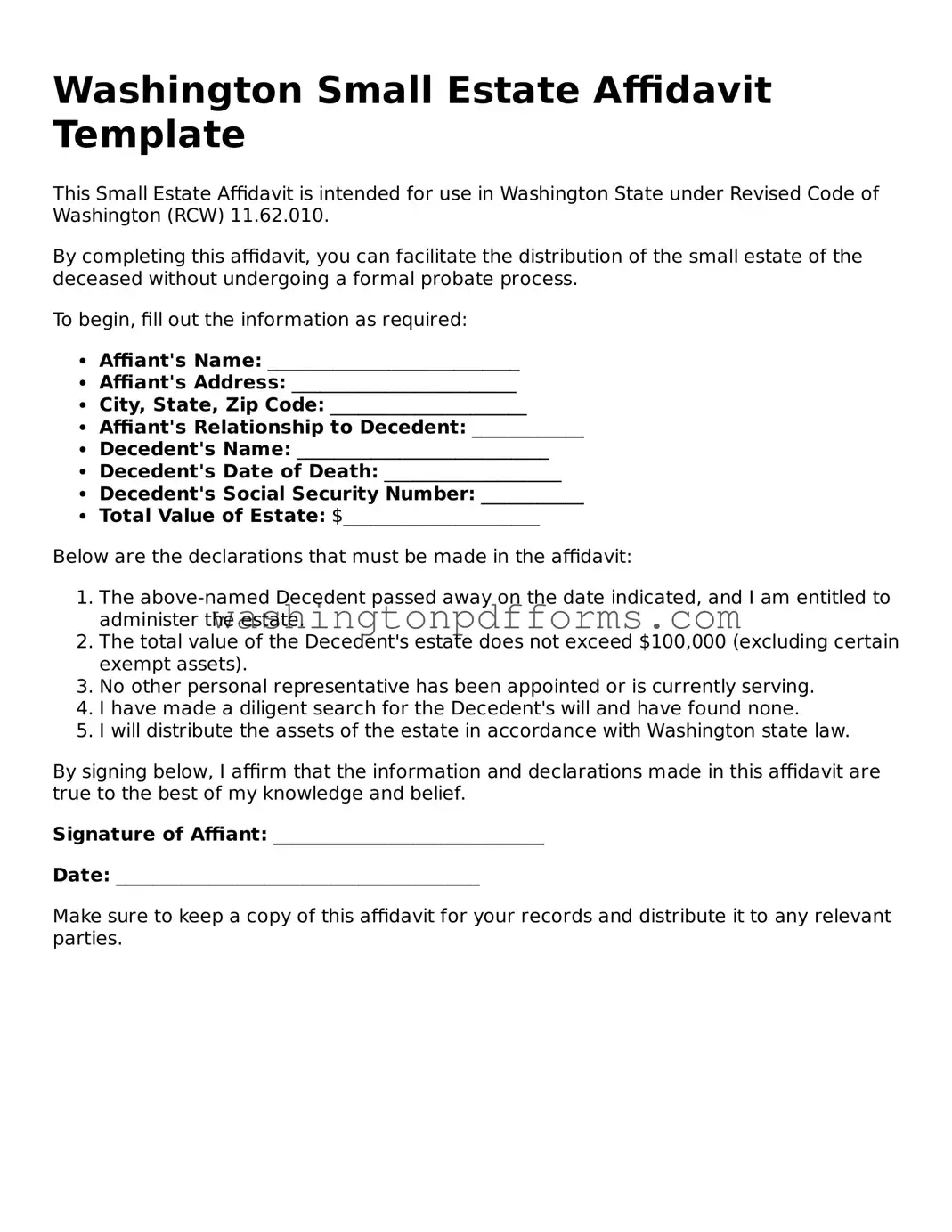Filling out the Washington Small Estate Affidavit can be a straightforward process, but many individuals encounter common pitfalls. One frequent mistake is failing to accurately identify the deceased. It is crucial to provide the full name and date of death. Incomplete or incorrect information can lead to delays or even rejection of the affidavit.
Another common error involves not including all the required assets. The affidavit must list all property belonging to the deceased that is valued under the state’s threshold. Omitting even a single asset can complicate the process, potentially resulting in legal complications later on.
People often overlook the importance of signatures. The affidavit requires the signatures of all heirs or beneficiaries. If one person neglects to sign, it may invalidate the entire document. Ensuring that everyone involved has reviewed and signed the affidavit is essential for its acceptance.
Additionally, individuals sometimes misjudge the timing of the affidavit's submission. Filing too early or too late can create issues. The affidavit should be submitted after the death but before any significant assets are transferred. Understanding this timeline is key to a smooth process.
Another mistake is failing to provide proper identification. When submitting the affidavit, individuals must include valid identification for themselves and any other signatories. Without this, the affidavit may be rejected by the court or financial institutions.
Moreover, many people forget to check for updates to the form or the laws surrounding it. Legal requirements can change, and using an outdated form can lead to problems. Always ensure you are using the most current version of the Small Estate Affidavit.
Some individuals also underestimate the importance of notarization. While not always required, having the affidavit notarized can lend credibility and help avoid disputes. A notarized document is often taken more seriously by banks and other entities.
Finally, a lack of clarity in the affidavit can lead to confusion. Using vague language or failing to clearly describe the assets can create misunderstandings. Clear, precise language helps ensure that all parties understand the contents of the affidavit and reduces the risk of disputes.
